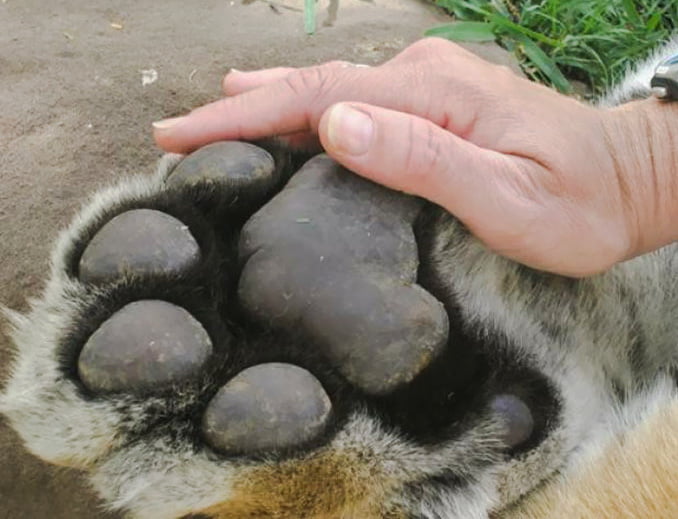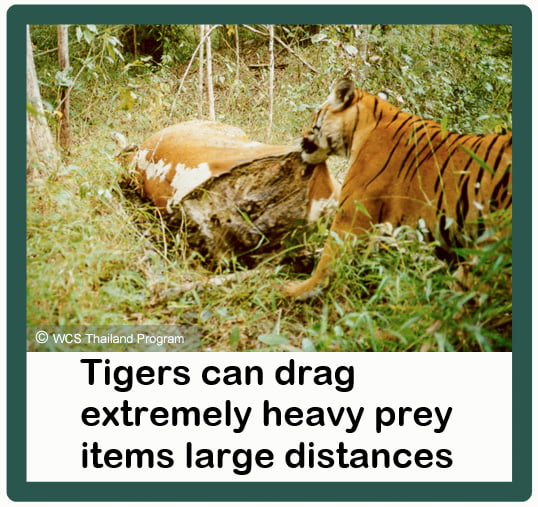A tiger’s paw is enormous! The enormous size is made clear when you compare it with the size of a male human hand as this picture does.

The Siberian tiger is the biggest species of tiger and therefore their paws should also be the biggest. I’m told that the width of the paw of a bulky male Siberian tiger is about 16 centimetres across. A medium-sized male Siberian tiger has a forepaw approximately 14 centimetres across. And a female Siberian tiger may have a paw which is about 10-12 centimetres across.
The numerical data is less enlightening then the visual. I am referring to the image which I think is remarkable. The best book on the wild cat species, Wild Cats of the World, does not provide specific information as to the size of the tiger’s paw. I can’t, therefore, provide you with another source, the best source in my view. However, the authors of Wild Cats of the World, Mel and Fiona Sunquist, describe tigers as “powerful, burly animals, well-equipped to single-handedly capture and subdue large prey”.
They also say that the “massive forelimbs are ideal for grappling with prey while holding onto it with the long, retractable claws of the broad forepaws”.
The tiger is designed to grab and hold onto prey rather than run very quickly much like the lion. “The body of the tiger is long and lithe but the hindquarters are not as well muscled and look almost puny compared with the forelimbs”. The strength is upfront to enable to cat to grab, hold and kill. Tigers are enormously strong. Surprisingly so to people who are unfamiliar with their size and power.

The tiger is built for strength not speed although this cat can run at a good pace. But because it’s body is so heavy, the final dash to kill prey is quite short. It has to be if it is to succeed. It is around 30 metres (33 yards) which is about the maximum it can achieve at top speed. The tiger uses the suffocating bite at the prey’s throat. They knock prey down with their powerful forelegs and grab prey with the sharp and massive claws of their huge front feet. The size of their paws helps to explain why they are so successful at the killing process.

Source of numerical data: biologist and wild game expert Alexander Batalov in reference to Amur tigers.

